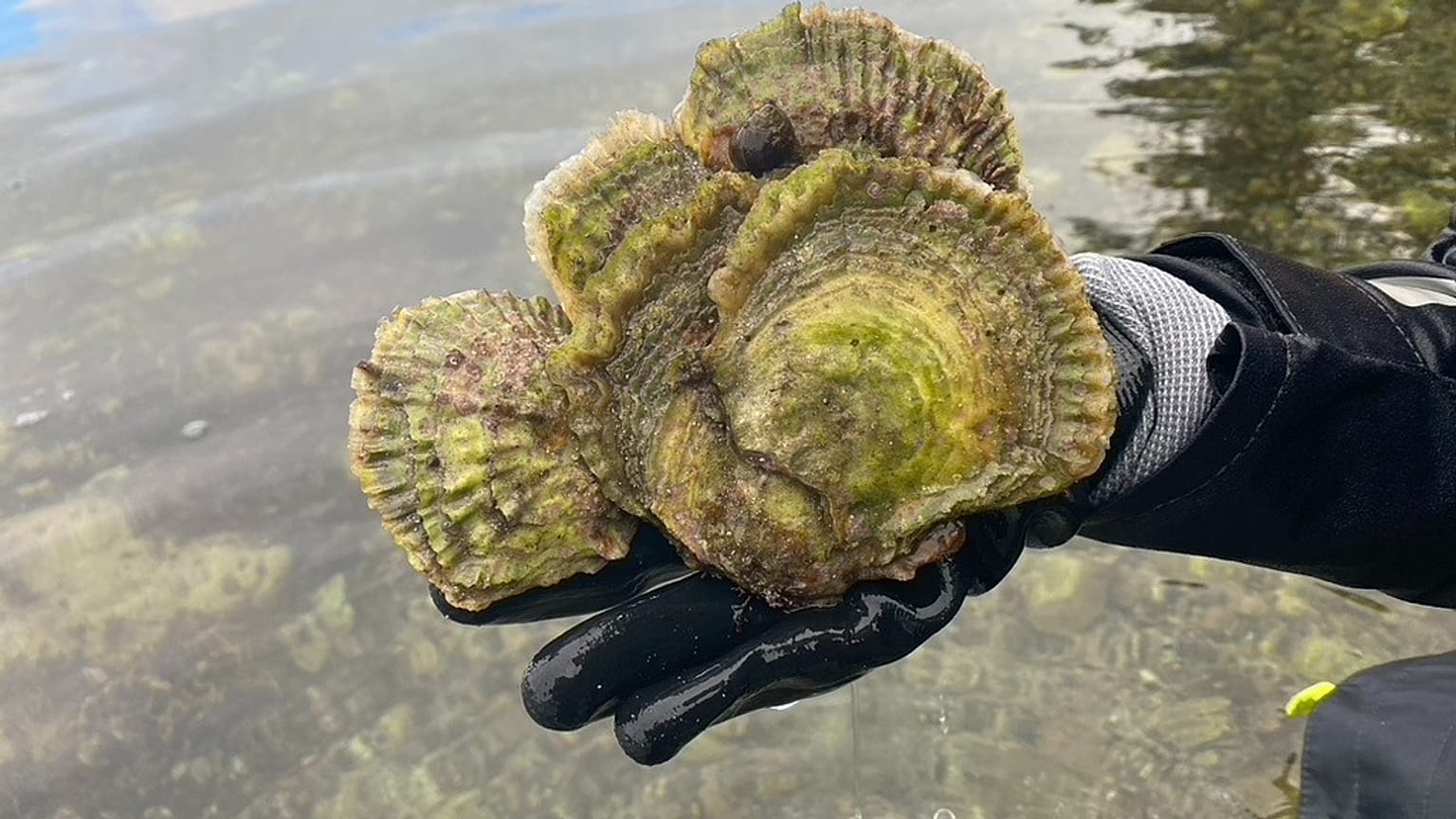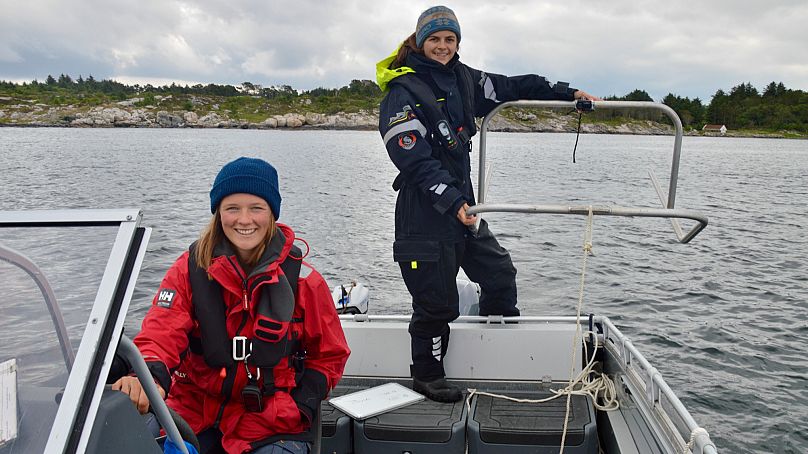Norway has one of the last disease-free populations of flat oysters.
Flat oysters are in trouble. Once abundant in Europe, overharvesting, disease, and invasive species have threatened populations across the continent.
Some of the few remaining naturally occurring disease-free populations are in Sweden and Norway.
Recently, the Norwegian Directorate of Fisheries published a proposal to protect flat oysters in Norway. But local researchers believe more needs to be done to curb harvesting and ensure healthy populations remain intact.
The plight of the flat oyster
Flat oysters are native to Europe, and have been common in the region since prehistory.
“We can't even comprehend how abundant it was,” says Philine Zu Ermgassen, an independent consultant and Honorary Researcher at the University of Edinburgh who has spent the past decade working on flat oyster restoration in Europe. She and her team have done historical analyses and found that there were once tens of hectares of dense reefs with oysters “piled upon each other”.
However, around the 17th century, humans began to overharvest them, especially as royalty gained a newfound respect for the mollusc.
“When the French kings discovered oysters, all of a sudden it went from being a poor person's food along the coastal areas to food for nobility and the French kings,” explains Ane Timenes Laugen, a professor of marine ecology at the University of Agder (UiA) in Kristiansand, Norway. “Then all of a sudden, there was much more overexploitation.”
This overexploitation continued throughout the centuries: the majority of oysters in Europe declined as a result of overharvesting. To add insult to injury, in the 1980s, a parasite was introduced that has decimated flat oyster populations across Europe.
Now, only a few healthy populations remain, primarily in Sweden and Norway. A recent survey in southern Norway, conducted by researchers at the UiA and not yet published, assessed 373 different locations in Norway. They found flat oysters in only about a third of sites, and only one per cent of the locations were densely populated, hinting at the species’ vulnerability.
And while flat oysters were recently reclassified from “near threatened” to “least concern” on the Norwegian Red List, researchers and the Directorate believe this classification undermines conservation efforts by reducing the perceived urgency to act.
“There is a clear understanding that this is a species worth preserving, and that local measures may be necessary to secure healthy and resilient populations,” says Njål (Njaal) Wang Andersen, Senior Adviser at the Norwegian Directorate of Fisheries, Section of Fisheries Management and Regulations.
‘A unique international responsibility’
While some flat oysters are eaten, these oysters are not usually the ones found in restaurants. But that doesn’t mean they aren’t crucial critters. Like other bivalves, they are filter feeders, helping to clean the ocean’s water. They also fall under the banner of “ecosystem engineers” or organisms that have a large impact on their habitats.
“Most people don't recognise it as a species, but even fewer people recognise it as a habitat builder,” says Ermgassen.
Oysters form reefs that are important habitats for other species.
“They're making animal forests and or structures that create habitat for other species, for hiding or for settling down,” says Johanna Marcussen, a PhD research fellow at the university. “When you pick up an oyster reef, there's a lot of life.”
Naturally formed oyster reefs are also very rare nowadays. In these reefs, the oysters are present not just as a species, but as a habitat. Ermgassen explains that there are reef-building populations on a small scale in France, Scotland, and Ireland, but Norway stands out.
“It's really rare to find populations where you get 50 or more oysters per square metre, Norway's pretty unique for that,” she says, noting that these habitats are “worth cherishing.”
There are efforts across Europe to preserve and restore flat oysters. But UiA researchers believe Norway has an international responsibility to conserve its populations.
“We host some of the last remaining reefs or the habitat of the flat oysters,” says Molly Reamon, a doctoral candidate at UiA. “It's super rewarding to work with.”
The key to oyster preservation
Currently, Agder is a “no take zone,” meaning that harvesting is completely banned. The Institute of Marine Research has a strict surveillance program to monitor the oysters and check for disease progression.
The Norwegian Directorate of Fisheries also recently released aproposalthat includes measures for future protection, namely adding one more “no-take zone,” partially banning fishing in two small areas.
“We're happy that the fishery directorate are doing something, but it's far from enough,” says Marcussen.
The UiA researchers are pushing for more awareness, preservation, and also data. While they commend the proposal of the fisheries, they still see the need for even more comprehensive measures. Protected areas should be more widespread as connectivity is important for oyster restoration.
“You can't just restore little habitat patches, they're not resilient enough,” explains Ermgassen, who was not involved in the proposal. “If we're talking about ecosystem recovery, we need populations, reefs to be connected over space so that they can interact with one another,”
The UiA researchers are also calling on the fisheries to enact a more national or regional harvesting ban. This could last anywhere from three to ten years, and would ensure the already diminishing healthy population doesn’t decrease even more before there is sufficient data.
As Andersen explains, they chose the one area because it has one of the densest and most unique populations, whereas other areas have no indication of overharvesting. “Enforcement of a full ban would be difficult and not necessarily justified,” he says
The directorate has not yet concluded the matter, as they will need time to review the public comments before submitting a final recommendation to the Ministry of Trade, Industry and Fisheries. He stresses that the Directorate’s legal authority is limited to regulating harvesting activity. If protection is needed against other pressures, such as development, pollution, or traffic that falls under the competence of environmental authorities.
“Our goal is to apply proportionate and knowledge-based regulation: strong enough to protect the species where it is most at risk, but also practical and enforceable in areas where populations are stable and not under harvesting pressure,” he wrote in an email to Euronews.
Beyond tangible restrictions and actions, the UiA researchers stress that reputation is also important. People often confuse the flat oysters with the invasivePacific oysters, which can wreak havoc on ecosystems.
“They have this very negative association with the Pacific oyster, and then they automatically have a very negative association with oyster in general,” says Reamon. “Most people in Norway don't know that flat oyster exists.”




















